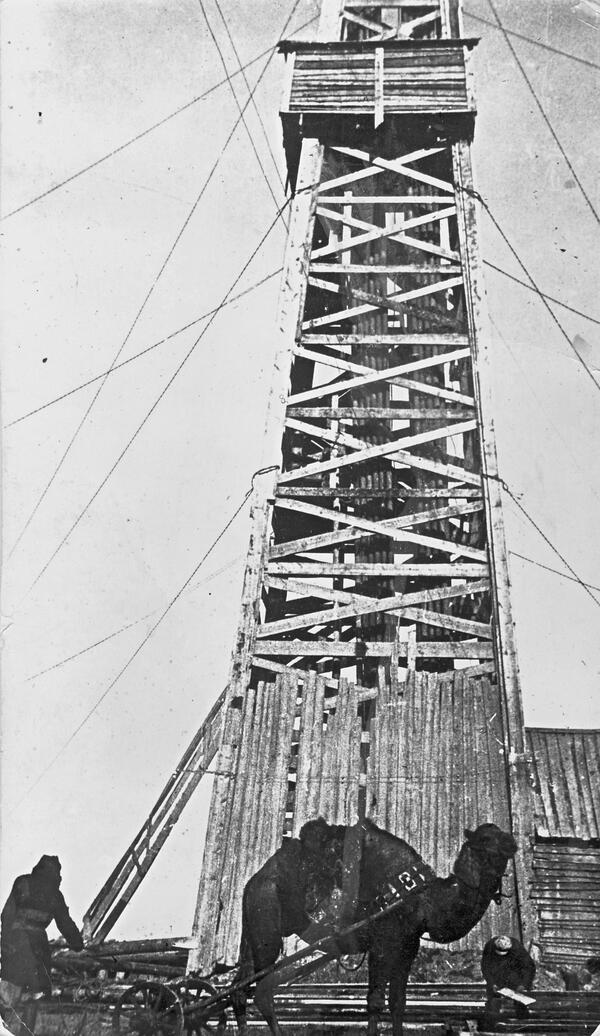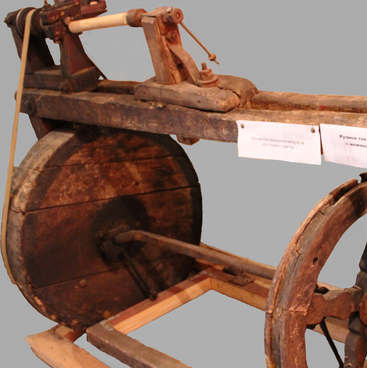This photo depicts bore well No. 702, which is informally referred to as the progenitor of Bashkir oil. Originally, its drilling was set to launch only in April 1931; however, the construction team began building the derrick two months earlier than initially planned. As early as February 6, the SterlitamAk-based newspaper ‘For the Five-Year Plan’ already reported that the workers had managed to complete the construction of derricks ahead of schedule despite working in freezing temperatures reaching minus 40 degrees Celsius. Same as the construction workers, the drillers worked ahead of schedule.
However, the drilling crew needed experienced specialists, which is why Alexey Korovnikov, who had previously worked on oil fields in Baku and the Urals, arrived at the bore well No. 702 from the Verkhnechusovskiye Gorodki drilling office. Alexey Korovnikov’s crew began drilling the well on June 3, 1931. At first, their work was complicated by numerous logistical issues, the poor quality of tools and equipment, inadequate skills of the drillers, and a lack of vehicles.
To set the drilling rigs in motion, Korovnikov’s crew were using steam boilers and machinery that was fueled by wood. Each boiler burned through about 20 cubic meters of wood each day. On October 31, 1931, an accident involving a pipe breakage at a depth of 33 meters occurred during the drilling of the bore well No. 702. A drilling crew led by Stepan Loginov arrived from the VerkhnechusovskIye Gorodki drilling office to eliminate the emergency but was unable to fix the breakage for almost six months.
To solve this problem, on March 11, 1932, Loginov’s crew started drilling a new well hole, which began from a depth of 439 meters. After reaching a depth of 627 meters, further drilling of the bore well No. 702 was halted over fears that the entire oil deposit might get flooded. In April that year, the drillers managed to recover more than eight metric tons of oil from the site. In May, the drillers advanced a little deeper, first reaching the depth of 674 meters, and a few days later, 680.15 meters. Around that time, they began using bailers, which are designed to raise liquids from deep wells to the surface.
On May 16, 1932, the bailing was interrupted by seven oil gushers that lasted between three and 30 minutes each. This day became known as the birth of the Bashkir oil industry. On June 12, bore well No. 702 was put into operation, thus closing the first chapter in the history of the progenitor of IshimbAy oil. The well continued operations until 1964. Having set the stage for the Bashkir oil industry, bore well No. 702 would be affectionately referred to as the “Grandmother Tower.” Nowadays, there is a memorial complex called the Grandmother Tower on the spot where the derrick of the bore well No. 702 used to sit.
However, the drilling crew needed experienced specialists, which is why Alexey Korovnikov, who had previously worked on oil fields in Baku and the Urals, arrived at the bore well No. 702 from the Verkhnechusovskiye Gorodki drilling office. Alexey Korovnikov’s crew began drilling the well on June 3, 1931. At first, their work was complicated by numerous logistical issues, the poor quality of tools and equipment, inadequate skills of the drillers, and a lack of vehicles.
To set the drilling rigs in motion, Korovnikov’s crew were using steam boilers and machinery that was fueled by wood. Each boiler burned through about 20 cubic meters of wood each day. On October 31, 1931, an accident involving a pipe breakage at a depth of 33 meters occurred during the drilling of the bore well No. 702. A drilling crew led by Stepan Loginov arrived from the VerkhnechusovskIye Gorodki drilling office to eliminate the emergency but was unable to fix the breakage for almost six months.
To solve this problem, on March 11, 1932, Loginov’s crew started drilling a new well hole, which began from a depth of 439 meters. After reaching a depth of 627 meters, further drilling of the bore well No. 702 was halted over fears that the entire oil deposit might get flooded. In April that year, the drillers managed to recover more than eight metric tons of oil from the site. In May, the drillers advanced a little deeper, first reaching the depth of 674 meters, and a few days later, 680.15 meters. Around that time, they began using bailers, which are designed to raise liquids from deep wells to the surface.
On May 16, 1932, the bailing was interrupted by seven oil gushers that lasted between three and 30 minutes each. This day became known as the birth of the Bashkir oil industry. On June 12, bore well No. 702 was put into operation, thus closing the first chapter in the history of the progenitor of IshimbAy oil. The well continued operations until 1964. Having set the stage for the Bashkir oil industry, bore well No. 702 would be affectionately referred to as the “Grandmother Tower.” Nowadays, there is a memorial complex called the Grandmother Tower on the spot where the derrick of the bore well No. 702 used to sit.



